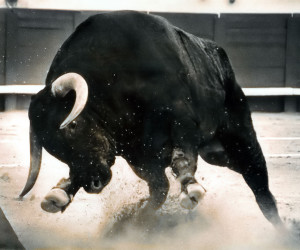Drafting or trading for Troy Tulowitzki isn’t for the faint of heart. In fact, whenever I find myself on the clock on draft day and his name is staring back at me from the list of available players, this scene usually comes to mind. Just take a look at his games played totals over the past three years: 47, 126, 91. That’s 264 games out of 486 that he managed to stay healthy for. Yikes. That sounds about as reliable as day-old fast food that’s been sitting out on the kitchen counter. But oh the potential rewards that can come with taking that plunge (on Tulo, not the congealed burgers). Over that three year span from 2012-14, Tulo finished in the top 5 among all qualified MLB hitters in batting average, on-base percentage, and slugging percentage, as well as 3rd in OPS (.950) and wOBA (.408) behind only Miguel Cabrera and Mike Trout. Needless to say, he led all MLB shortstops in each of those categories by significant margins. Tulo could always be counted on to produce at an elite level when healthy. So what’s wrong with him this season? Have all of the injuries finally caught up to him?
In order to answer those questions, let’s take a look at some of Tulowitzki’s key statistics since the 2012 season to determine what, if anything, has changed in his profile:
| Season | G | PA | HR | R | RBI | SB | BB% | K% | ISO | BABIP | AVG | OBP | SLG |
|---|---|---|---|---|---|---|---|---|---|---|---|---|---|
| 2012 | 47 | 203 | 8 | 33 | 27 | 2 | 9.40% | 9.40% | 0.199 | 0.284 | 0.287 | 0.36 | 0.486 |
| 2013 | 126 | 512 | 25 | 72 | 82 | 1 | 11.10% | 16.60% | 0.229 | 0.334 | 0.312 | 0.391 | 0.54 |
| 2014 | 91 | 375 | 21 | 71 | 52 | 1 | 13.30% | 15.20% | 0.263 | 0.355 | 0.34 | 0.432 | 0.603 |
| 2015 | 47 | 178 | 5 | 26 | 23 | 0 | 2.80% | 21.90% | 0.181 | 0.341 | 0.287 | 0.303 | 0.468 |
While his power numbers are slightly down and his K-rate is a bit higher than what he’s produced in recent years, those differences are fairly minor. A 21.9% K% from a power hitter is nothing to be too concerned about. What is concerning is that microscopic 2.8% BB%. Roughly one-third of the way through the regular season, Tulo has drawn just 5 walks. 5. Somewhere, Adam Jones just blushed. This paints a picture of a more aggressive approach than Tulo’s ever shown before. Let’s take a deeper look into some plate discipline numbers to hopefully confirm or deny this aggression theory:
| Season | O-Swing% | O-Contact% | Z-Swing% | Z-Contact% | Contact% | SwStr% |
|---|---|---|---|---|---|---|
| 2012 | 27.60% | 85.30% | 58.20% | 91.80% | 89.60% | 4.40% |
| 2013 | 24.60% | 76.50% | 59.90% | 87.50% | 83.80% | 6.50% |
| 2014 | 28.30% | 71.80% | 60.60% | 89.60% | 82.90% | 7.10% |
| 2015 | 37.20% | 67.20% | 63.60% | 83.80% | 77.50% | 10.80% |
As you can see from the gradually increasing O-Swing% and decreasing O-Contact%, Tulo has been chasing a far higher percentage of pitches thrown outside of the strike zone than usual, and has been missing those pitches at a higher rate as well. The 10.8% SwStr% is well above his career average (6.7%) and would represent his highest rate since the 2006 season. Perhaps with Carlos Gonzalez struggling and Justin Morneau on the shelf, he feels the need to do more and is pressing a bit at the plate. Whatever the case might be, it’s definitely something worth monitoring.
While the aforementioned Adam Jones compares favorably to the 2015 version of Tulowitzki in terms of plate discipline, another player rates as an interesting comp in terms of batted ball data, with one major exception. Let’s take a look:
| Name | LD% | GB% | FB% | IFFB% | HR/FB | Soft% | Med% | Hard% |
|---|---|---|---|---|---|---|---|---|
| ??? | 16.20% | 41.90% | 41.90% | 10.20% | 34.70% | 14.40% | 43.20% | 42.40% |
| Tulowitzki | 18.20% | 39.40% | 42.30% | 10.30% | 10.30% | 13.90% | 40.20% | 46.00% |
Nearly identical batted ball numbers across the board in terms of types of batted balls as well as quality of contact. The one glaring difference between Tulo and the mystery player is in the home run to fly ball rate category. While Tulo is currently hovering around the MLB average (10.8%), the other player has taken advantage of a 34.7% HR/FB (2nd in MLB) to crush 17 home runs on the young season. That player is none other than rookie sensation Joc Pederson. While Pederson’s elevated HR/FB rate can be at least partially attributed to his impressive average fly ball distance (313.68 ft – 6th in MLB), producing a rate that’s more than three times that of a player with a similar profile is unusual.
Tulo’s plate discipline might be trending into Adam Jones territory these days, but his batted ball and quality of contact results show that he is still a force to be reckoned with. While his chase percentage and increased fly ball percentage (42.3% this season; 38.6% career) is likely to result in a slightly lower batting average than we’re used to seeing from Tulo, he’s still hitting the ball with authority, which can be seen in his 46.0% hard hit % (3rd in MLB). Good times are ahead in the thin air at Coors Field.
Final Verdict:



